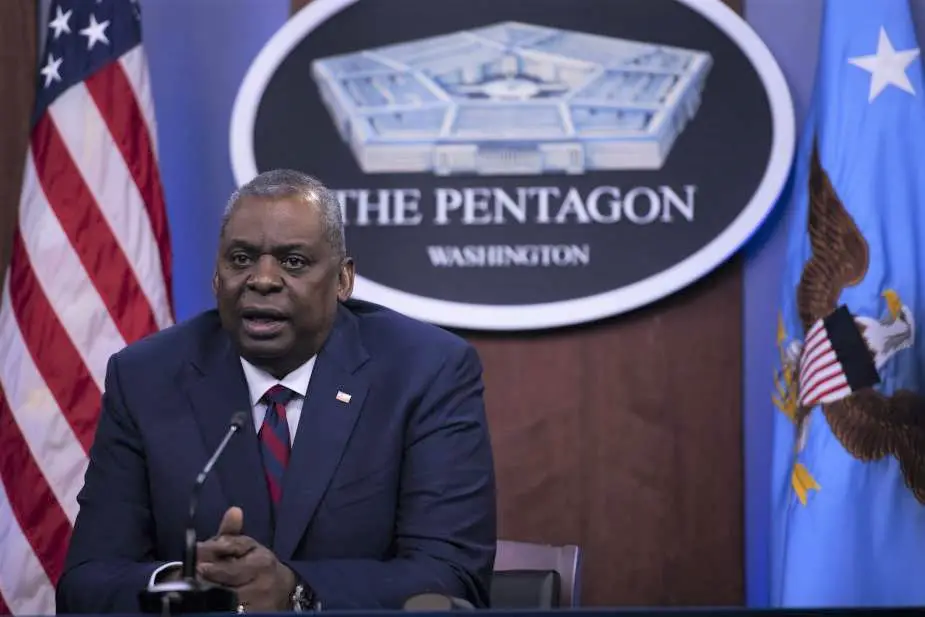Breaking news
US Defense budget request boosts of research and nuclear modernization.
On May 28, the U.S. DoD published (written by David Vergun) information about the fiscal year 2022 Defense Department budget request that includes the largest-ever research, development, test and evaluation request — $112 billion, which is a 5.1% increase over fiscal 2021. It also includes $27.7 billion for nuclear triad modernization. The budget totals $752.9 billion. It includes $37.9 billion for the Department of Energy and other agencies. It reflects a 1.6% increase from the fiscal 2021 enacted budget.
Follow Army Recognition on Google News at this link
 U.S. Secretary of Defense Lloyd J. Austin III, Pentagon, May 5, 2021 (Picture source: U.S. DoD)
U.S. Secretary of Defense Lloyd J. Austin III, Pentagon, May 5, 2021 (Picture source: U.S. DoD)
The budget provides a 2.7% pay raise for both military and civilians while investing nearly $9 billion in family support programs. In a statement published on May 28, Secretary of Defense Lloyd J. Austin III said the budget invests in people, supports readiness and modernization, combats threats posed by climate change and provides capabilities needed to meet the pacing threat from Beijing.
Deputy Secretary of Defense Kathleen H. Hicks briefed the media on the fiscal 2022 Defense Department budget. She reiterated Austin's comments and said the budget also addresses the COVID-19 pandemic and drawing down U.S. forces from Afghanistan with an exit date of Sept. 11, adding that the department will provide an over-the-horizon capability for counterterrorism and Afghan National Security Forces support. "The budget also documents some of the tough choices we had to make, as we lessen our reliance on vulnerable systems that are no longer suited for today's advanced threat environment or are too costly to sustain," she said. Those resource reallocations, she said, are going to fund advanced technologies like microelectronics, hypersonic missiles, artificial intelligence, cyberspace capabilities and a 5G network.
DOD also has invested in its workforce, particularly in billets where there are critical needs, she said. "The request also looks to build an increasingly resilient force, one that recognizes and embraces its diversity as a strength."
The budget also provides funding to strengthen the department's ability to identify and address insider threats in its ranks and to combat sexual assault and harassment, she said.
The budget request slightly lowers total military active and reserve component end strength from FY21 authorized 2,150,375 to 2,145,900. The only service to get an end-strength increase is the Space Force, which had 6,434 guardians authorized in FY21, with a request to bump that up to 8,400.
Anne McAndrew, performing the duties of undersecretary of defense (comptroller) and chief financial officer, said that the budget also reflects capabilities for managing threats from Russia, Iran, North Korea and violent extremist organizations, in addition to China.
The budget also invests in taking care of people. "Their physical, mental and emotional health is among the department's highest priorities," she said. Navy Vice Adm. Ron Boxall, the director of Force Structure, Resources and Assessment, Joint Staff, said the department will work with Congress to divest legacy platforms that overburden readiness accounts.
Budget request highlights include:
• $20.4 billion for missile defense
• $6.6 billion to develop and field long-range fires
• $52.4 billion for fourth- and fifth-generation fighter aircraft
• $34.6 billion for a hybrid fleet of manned and unmanned naval platforms
• $12.3 billion for ground force weapons and next-generation combat vehicles
• $20.6 billion for space capabilities
• $10.4 billion for cyberspace activities
• $122.1 billion for training, installation support, and support to allies and partners



















